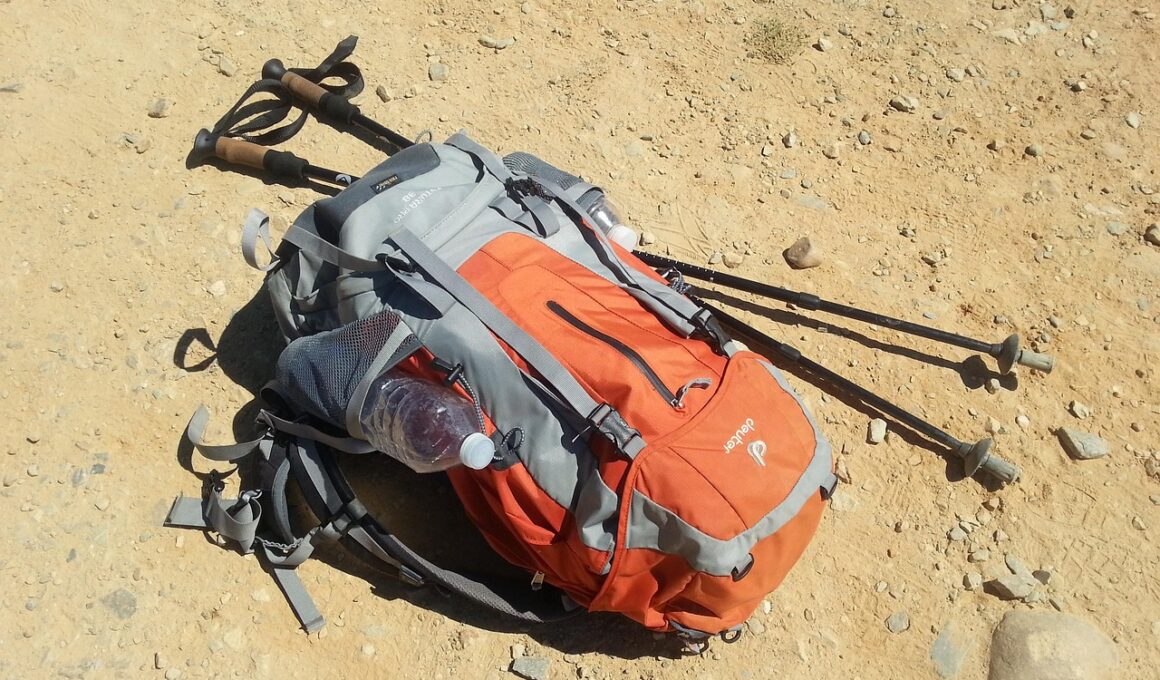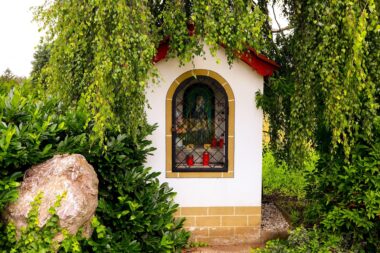Pilgrimage Trips: Combining Adventure, Fitness, and Culture
Pilgrimage trips are increasingly popular as travelers seek both adventure and personal growth. These journeys often involve physically demanding treks, followed by moments of deep reflection and cultural immersion. Pilgrimage routes span countries and continents, providing unique experiences that blend fitness with spirituality. Countries like Spain and India host some of the most renowned pilgrimage routes, attracting pilgrims seeking both adventure and enlightenment. Notably, the Camino de Santiago in Spain offers breathtaking landscapes, enabling travelers to challenge themselves physically and mentally while staying connected to their spiritual journey. The physical exertion required in pilgrimage can lead to significant health benefits, such as improved cardiovascular fitness and mental well-being. Walking long distances can also enhance stamina and resilience. Moreover, engaging in these trips allows travelers to forge connections with fellow pilgrims, sharing stories and experiences along the way. This sense of community enriches the journey, transforming it into not just a physical challenge, but also a communal experience of cultural exchange and mutual understanding. Ultimately, pilgrimage trips showcase how adventure can meet fitness, forming a holistic travel experience that nourishes both body and soul.
Exploring Sacred Sites
Sacred sites are often at the heart of pilgrimage routes, providing spiritual hubs that enhance the overall experience. Whether it’s visiting the iconic Sagrada Familia in Barcelona or the sacred city of Varanasi in India, these locations are filled with historical significance. Pilgrims can reflect on their spiritual journey while experiencing rich cultural traditions. Each sacred site offers unique architecture, rituals, and festivals that enrich the travel experience, merging faith with understanding. Additionally, these sites often showcase local art and heritage, allowing for a deeper connection with the communities that have thrived in these spiritual landscapes. Exploring sacred sites often involves engaging with local inhabitants, who might share stories about the significance of these places. This interaction provides an authentic glimpse into the cultural fabric of the area, demonstrating how pilgrimage promotes cultural awareness. As travelers navigate through these sacred spaces, they discover not only their own spirituality but also the traditions and beliefs of others. Through shared experiences and insights, pilgrims can develop a more profound appreciation for diverse cultures and practices. Consequently, these interactions broaden horizons and create lasting memories.
Diverse pilgrimage locations cater to a variety of interests and fitness levels, making this form of travel accessible to everyone. Pilgrimage routes range from challenging treks in remote mountains to leisurely walks through historical towns, ensuring diverse experiences. Each route has its unique characteristics that attract different types of travelers, all seeking something profound. For instance, the Inca Trail in Peru presents stunning views of ancient ruins and a rigorous physical challenge, creating an unforgettable adventure for fitness enthusiasts. Meanwhile, less strenuous options like the Via Francigena allow participants to enjoy leisurely walks through picturesque villages in Italy. As such, pilgrims can choose routes that align with their physical abilities and personal interests. Selecting the right pilgrimage is essential for a fulfilling experience, as it sets the tone for the journey ahead. Preparedness also plays a critical role in ensuring safety and enjoyment. Participants should consider their fitness levels and health conditions before embarking on this adventure. Researching the terrain, weather, and duration is vital to make informed decisions that enhance the journey. Ultimately, the right pilgrimage choice guarantees a balanced mix of physical challenge and cultural enrichment.
Physical and Mental Benefits
The health benefits of pilgrimage trips extend beyond physical fitness and into mental well-being. The combination of exercise and mindfulness can have a transformative effect on an individual’s overall health. Walking long distances naturally releases endorphins, leading to improved mood and reduced stress levels. Along the pilgrimage, many travelers find time to engage in meditation or reflection, which further enhances the mental health benefits. By simplifying their lives during these journeys, pilgrims often experience clarity and peace. This emotional release can be pivotal in developing a deeper sense of purpose and gratitude. In addition, being immersed within nature while walking can foster feelings of connection and serenity. Studies highlight the positive impact of outdoor activities on mental clarity, making pilgrimage trips a dual-purpose vacation. Participants often return home feeling rejuvenated, both physically and emotionally. Furthermore, the accomplishment of completing a pilgrimage route instills a sense of achievement, boosting self-esteem. In recognizing both mental and physical gains, pilgrims can appreciate their journeys on various levels. Such holistic experiences foster wellness that continues long after the journey ends.
Participating in pilgrimage experiences allows travelers to engage with local communities, enhancing their overall adventure. As pilgrims walk along the routes, they often interact with local inhabitants – a vital aspect of engaging with different cultures. These interactions lead to sharing stories, traditions, and local customs, which enrich the travel experience. Local food plays a big role in cultural exchange, creating opportunities to taste regional dishes and learn about culinary traditions. Additionally, purchasing handmade crafts supports local economies while promoting preservation of traditional arts. In many cases, pilgrims are welcomed with open arms in communities along the route, who often share their customs and rituals, inspiring travelers with unique insights. Such exchanges can deepen understanding and foster long-lasting relationships founded upon shared experiences. The spirit of hospitality within pilgrimage communities showcases the power of travel to unify people with diverse backgrounds. Moreover, these connections often enlighten travelers about local challenges, allowing them to appreciate their own lives more profoundly. Therefore, pilgrimages not only promote personal growth for the pilgrim but also strengthen community ties that flourish through shared understanding and kindness.
Cultural Enrichment Through Pilgrimages
Cultural enrichment is a profound benefit of pilgrimage trips that goes beyond personal gains. Engaging with different cultures fosters empathy and awareness of global diversity. Each pilgrimage route is steeped in historical significance, showcasing the unique stories of civilizations, traditions, and spiritual practices. As travelers navigate through various landscapes, they become living witnesses to traditions that have withstood the test of time. Stopping at local festivals is an excellent way to deepen one’s understanding of cultural dynamics. These experiences allow pilgrims to celebrate alongside local communities, fully immersing themselves in regional traditions. Their participation fosters shared joy and appreciation of cultural heritage. Additionally, many pilgrimage routes promote environmental sustainability, encouraging travelers to respect natural landscapes while soaking in their beauty. Understanding the significance of nature within diverse cultures can promote responsible travel practices. Pilgrimage trips emphasize the importance of connecting with both the cultural and natural worlds, creating a holistic appreciation for humanity’s place in it. This newfound awareness inspires travelers to act responsibly in their daily lives and make an eco-friendly impact on the communities they visit.
Planning a pilgrimage trip involves several elements that contribute to its success. Enhancing this experience requires careful consideration of route selection and preparation. Start by researching various pilgrimage routes to determine which aligns best with your objectives and ability levels. Gathering essential gear and essentials ensures a safe and comfortable journey throughout. Pilgrimage often necessitates the right footwear, hydration packs, and navigation tools for optimal safety and enjoyment. Prioritize staying physically fit before starting your journey, as this will make the overall experience more fulfilling. Setting realistic goals helps maintain motivation and commitment during the trip. Participation in group tours can enhance accountability and support, adding an additional layer of motivation. Leveraging technology, such as suggested apps, can assist in tracking your progress throughout the pilgrimage trip. These tools also provide access to community forums for support. Documenting your journey can create lasting memories and inspire others who may wish to embark on similar trips. Ultimately, successful pilgrimage planning lays the groundwork for enriching experiences that nurture personal growth, cultural connections, and physical wellness.





